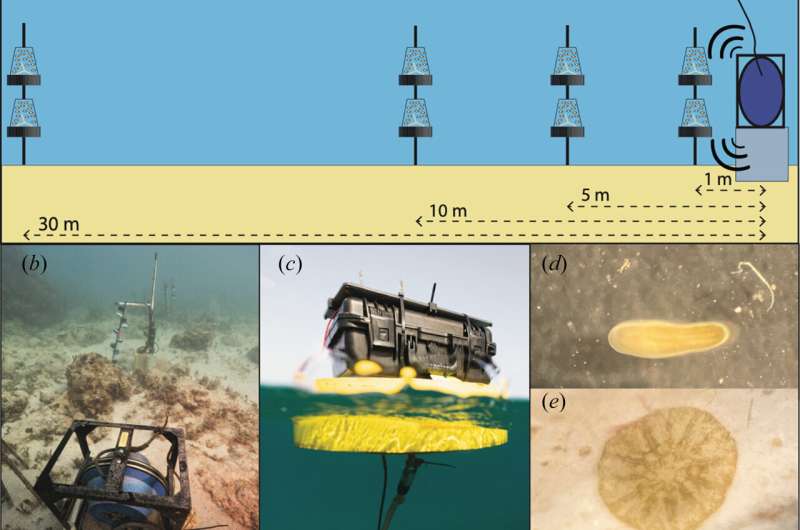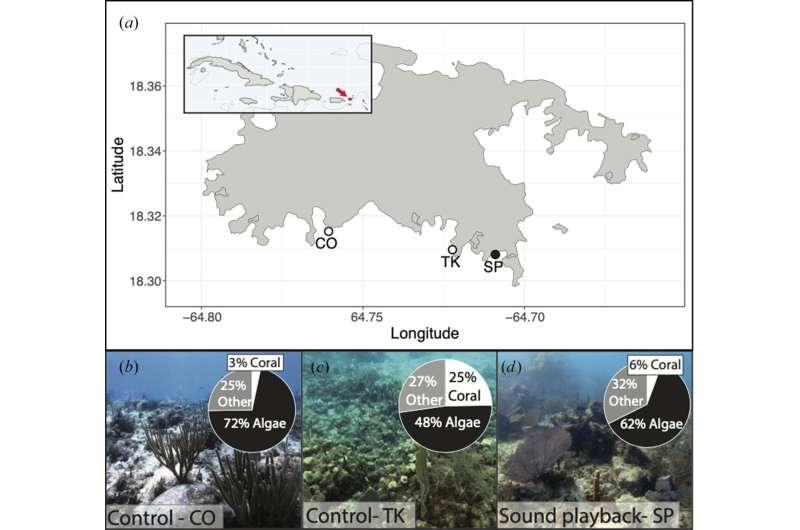March 13, 2024 report
This article has been reviewed according to Science X's editorial process and policies. Editors have highlighted the following attributes while ensuring the content's credibility:
fact-checked
peer-reviewed publication
trusted source
proofread
Creating soundscapes increases coral larval settlement, study finds

A team of marine biologists and oceanographers at the Woods Hole Oceanographic Institution in Falmouth, Massachusetts, has found that creating soundscapes for coral larvae encourages them to settle on desired coral reefs.
In their study, reported in the journal Royal Society Open Science, the group set up speakers along dead coral reefs to coax coral larvae into settling into desired environments.
Prior research has shown that warming water temperatures, increased ocean acidity, pollution, overfishing and habitat loss over the past several decades have led to coral reefs dying. Some estimates suggest as much as half of all reefs have died since the 1950s.
For this new study, the team built on prior research that has shown coral larvae drop out of water currents when they hear healthy reef sounds, such as splashing fish, when deciding where to settle and eventually metamorphosize.
Due to undersea environmental changes, coral larvae have found it more difficult to figure out where to settle, and as a result, many of them die. As the environment has changed, fewer fish and other creatures inhabit coral areas, resulting in fewer cues for coral larvae. To overcome this problem, the researchers made sound recordings of healthy coral reefs and then played the recordings for coral larvae. They determined the larvae were convinced to stop and settle near the speakers.

The work by the team involved setting up speakers at three separate sites near St. John, Virgin Islands. They placed containers holding coral larvae in the vicinity, along with pieces of ceramic to stand in for dead coral. They then played the recordings they had made near just one of the containers for three days in a row.
In studying the ceramic pieces, they found 1.7 times more larvae had settled on the ones that had been placed near the speakers. They also found settlement rates dropped as the containers were placed farther and farther away from the speakers.
The researchers acknowledge that more work needs to be done before speaker systems are installed at sites where coral has died; mostly to find out if the colonies that are begun by using the speaker technique are able to survive afterward.
More information: Nadège Aoki et al, Soundscape enrichment increases larval settlement rates for the brooding coral Porites astreoides, Royal Society Open Science (2024). DOI: 10.1098/rsos.231514
Journal information: Royal Society Open Science
© 2024 Science X Network




















